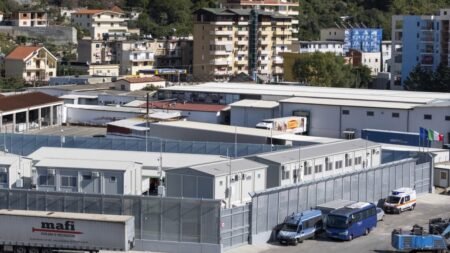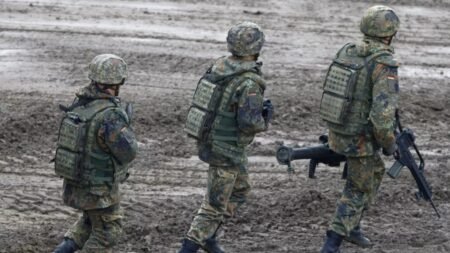Russian President Vladimir Putin said on Friday that Moscow has started production of its newest hypersonic missiles and reaffirmed plans to deploy them to Belarus later this year, posing a threat to neighbouring Ukraine.
Sitting alongside Belarus’ President Aliaksandr Lukashenka on Valaam Island near St Petersburg, Putin said the military already has selected deployment sites in Belarus for the Oreshnik intermediate-range ballistic missile.
“Preparatory work is ongoing, and most likely we will be done with it before the year’s end,” Putin said, adding that the first series of Oreshniks and their systems have been produced and entered military service.
Russia first used the Oreshnik, which is Russian for “hazelnut tree”, against Ukraine in November, when it fired the experimental weapon at a factory in Dnipro that built missiles when Ukraine was part of the Soviet Union.
That strike caused explosions which reportedly lasted for up to three hours but there were no fatalities.
Russian state media extolled the Oreshnik after the attack on Dnipro and, in a warning to the West, claimed it would take just 11 minutes to reach an air base in Poland and 17 minutes to reach NATO’s headquarters in Brussels.
Putin has also praised the Oreshnik’s capabilities, saying its multiple warheads that plunge to a target at speeds up to Mach 10 are immune to being intercepted and are so powerful that the use of several of them in one conventional strike could be as devastating as a nuclear attack.
However, experts have pointed out that the missile’s actual capabilities are yet to be proven and might be overblown for propaganda purposes.
In June, reports claimed Oreshnik suffered a botched launch, with unverified footage purporting to show it fall apart over Kazakhstan, prompting an investigation by the authorities in Astana.
Threatening the West
The Russian president warned the West that Moscow could use it against Ukraine’s NATO allies if they allowed Kyiv to use their longer-range missiles to strike inside Russia.
Russia’s missile forces chief has declared that Oreshnik, which can carry conventional or nuclear warheads, has a range allowing it to reach all of Europe.
Intermediate-range missiles can fly between 500 and 5,500 kilometres. Such weapons were banned under a Soviet-era treaty that Washington and Moscow abandoned in 2019.
Last autumn, Putin and Lukashenka signed a treaty giving what Moscow said were “security guarantees” to Belarus, including the possible use of Russian nuclear weapons.
The pact follows the Kremlin’s revision of its nuclear doctrine, which for the first time placed Belarus under its nuclear umbrella amid tensions with the West over Russia’s ongoing all-out war in Ukraine.
Lukashenka, who has ruled Belarus for over 30 years and has relied on Kremlin subsidies and support, allowed Russia to use his country’s territory to send troops into Ukraine at the launch of the full-scale invasion in early 2022 and to host some of its tactical nuclear weapons.
Russia has not disclosed how many such weapons were deployed, but Lukashenka said in December that his country currently has several dozen.
The deployment of tactical nuclear weapons to Belarus, which has a 1,084-kilometre border with Ukraine, would allow Russian aircraft and missiles to reach potential targets there more easily and quickly if Moscow decides to use them.
It also extends Russia’s capability to target several NATO allies in eastern and central Europe.
The revamped nuclear doctrine that Putin signed last year formally lowered the threshold for Russia’s use of its nuclear weapons.
The document says Moscow could use nuclear weapons “in response to the use of nuclear and other types of weapons of mass destruction” against Russia or its allies, as well as “in the event of aggression” against Russia and Belarus with conventional weapons that threaten “their sovereignty and/or territorial integrity”.
Additional sources • AP
Read the full article here
















